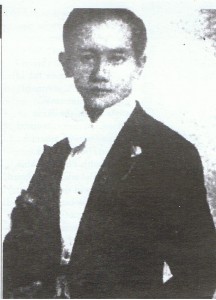By PABLO TARIMAN
 THIS year marks the 66th anniversary of the Battle of Manila, also known as the Holocaust of 1945.
THIS year marks the 66th anniversary of the Battle of Manila, also known as the Holocaust of 1945.
On that year, members of Manila’s prominent families became victims of war-time massacre, among them the Lims (Vicente), the Escodas (Josefa Llanes Escoda, mother of former Cultural Center of the Philippines president Bing Roxas), the Quirinos, the Syquias, the Del Mundos and the Colaycos.
But to Manila’s music world, the holocaust of 1945 was also the year the first Filipino celebrated violin prodigy — Ernesto Vallejo — met his untimely death in the hands of the Japanese invaders.
Vallejo was the first Filipino violin soloist of the Manila Symphony Orchestra (MSO), which was founded in 1926.
If piano prodigy Cecile Licad impressed Van Cliburn at age 11, Vallejo at age 12 impressed no less than the great Russian violinist Mischa Ellman when the latter visited Manila in 1921.
It was Ellman himself who suggested that Vallejo be given the chance to study abroad.
The young Vallejo was not just an exceptionally talented violinist but a renaissance man probably in the mould of Jose Rizal. He also studied the piano, became proficient in French and excelled in tennis and swimming at the same time.
After only three years of violin studies in the United States, he held his first series of concerts in Florida, Ohio, Washington D.C., and Boston, among others.
After one such concert, an admirer gifted him with a 200-year-old Ferdinand Dondolfi violin, costing $10,000 in the late 1920s. Another admirer, this time a widow from California – also gifted him with a violin worth $2000 after one such performance.
For the record, Vallejo was the first violinist to debut at the New York’s Town Hall to great acclaim. He was also the first Filipino to give a command performance for then US President Calvin Coolidge at the White House and and for General Douglas MacArthur with whom Vallejo stayed for two weeks at the latter’s Stotsenberg Estate in Philadelphia.
Carmita Legarda, who witnessed first-hand the performances of Vallejo with the MSO before the war, wrote: “Vallejo’s great artistry and commanding presence, despite his diminutive size, always proved a drawing card whenever he was soloist and his level musicianship helped to mould the MSO to achieve a standard of musical excellence and maturity.”
Among the noted pupils of Vallejo were violinist-turned-conductor Redentor Romero and Basilio Manalo.
Where was Vallejo in the last two years before the Holocaust of 1945?
As early as 1944, Vallejo found it hard to survive in Manila.
From Romero’s account, living in Manila during that year was pure hell. The prices of staple food rose, the looters multiplied and mere suspected guerrillas and innocent civilians were being tortured, among them Romero’s brother.
For this reason, Vallejo accepted the invitation of a wealthy family friend, Manuel Gonzalez to evacuate in Tanauan, Batangas. His cherished possessions then were his four expensive violins and lots of musical pieces.
Before the holocaust, there were regular concerts in the Tanauan house where Vallejo lived in 1944. Japanese officers were seen in some of those concerts.
But on the night of February 9, 1945, a messenger from the guerrilla forces warned them that the Japanese command based in Batangas had received orders that all civilians left in the town would be massacred and their houses burned.
For a while, the Vallejos thought that since they befriended some Japanese officers during those house concerts, they would be spared.
The next day, February 10, 1945, the retreating Japanese Marine Corps in Tanauan town killed scores of innocent civilians, among them Vallejo, his wife and three children.
Their house was burned along with priceless music scores and their four expensive violins.
A few gifted violinists have emerged after the war but none of them came close to the short but phenomenal career of Ernesto Vallejo.
